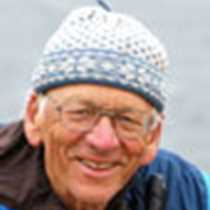San Javier Mission, Baja California Sur
It was in the first few years of the 18th century that the dedicated Jesuit priest Juan de Ugarte, who had been among the Cochimi natives, moved the original mission that was founded at Biaundo to the small fertile stream valley of San Javier. Here he labored for a number of years establishing a permanent water supply by building dams then constructing aqueducts for irrigation of fields to stabilize the lives of the local people and to center them on the mission and Ugarte's faith. Later in the middle of the century, an actual church was built out of local stones hand hewed to form what still stands today against the backdrop of the rugged skyline of the Sierra de la Giganta range. Many find this remaining active mission of San Javier de Vigge-Biaundo to be one of the most beautiful of all the missions built by the Jesuits. Even today there is still a huge gathering of pilgrims to the mission on December 2nd of every year.
Our "pilgrimage" began from the lazy sultry port of Escondido, just south of the booming village of Loreto. The Jesuits rode on the backs of burros along a windy path called "Camino Real" - merely a path snaking its way deep into the canyons and arroyos of this rugged coastal mountain range. Although we were in comfortable large vans, the road still felt like it was constructed mostly for the feet of burros and horses. A short stop about half-way up the mountain gave us a chance to stretch our legs and to view a small sample of rock paintings. In some extremely remote valleys of the peninsula this ancient artwork still baffles scientists as to who were the artists and what is the significance of the figures. For us the small drawings showed how time does not wear away some evidence of ancient people.
Time also had not altered the magnificence of the relatively simple church constructed about 250 years ago. A wide cobble road forms the perfect approach to the stone building adorned with one bell tower where four bells hung silently. Inside, the alter was at one end of the cross-shaped floor plan, with rows of pews along the long axis of the cross waiting for the next group of followers to arrive. We all walked around and through the mission to try to get the perfect view and the quintessential photograph that would convey the beauty and simplicity of the setting. After a simple traditional lunch with hand-made tortillas we "crawled" down the mountain road and to the ship. Topping off the day was a group of common dolphins and a pastel sunset behind the jagged ridges and peaks of the Sierra de la Giganta.
It was in the first few years of the 18th century that the dedicated Jesuit priest Juan de Ugarte, who had been among the Cochimi natives, moved the original mission that was founded at Biaundo to the small fertile stream valley of San Javier. Here he labored for a number of years establishing a permanent water supply by building dams then constructing aqueducts for irrigation of fields to stabilize the lives of the local people and to center them on the mission and Ugarte's faith. Later in the middle of the century, an actual church was built out of local stones hand hewed to form what still stands today against the backdrop of the rugged skyline of the Sierra de la Giganta range. Many find this remaining active mission of San Javier de Vigge-Biaundo to be one of the most beautiful of all the missions built by the Jesuits. Even today there is still a huge gathering of pilgrims to the mission on December 2nd of every year.
Our "pilgrimage" began from the lazy sultry port of Escondido, just south of the booming village of Loreto. The Jesuits rode on the backs of burros along a windy path called "Camino Real" - merely a path snaking its way deep into the canyons and arroyos of this rugged coastal mountain range. Although we were in comfortable large vans, the road still felt like it was constructed mostly for the feet of burros and horses. A short stop about half-way up the mountain gave us a chance to stretch our legs and to view a small sample of rock paintings. In some extremely remote valleys of the peninsula this ancient artwork still baffles scientists as to who were the artists and what is the significance of the figures. For us the small drawings showed how time does not wear away some evidence of ancient people.
Time also had not altered the magnificence of the relatively simple church constructed about 250 years ago. A wide cobble road forms the perfect approach to the stone building adorned with one bell tower where four bells hung silently. Inside, the alter was at one end of the cross-shaped floor plan, with rows of pews along the long axis of the cross waiting for the next group of followers to arrive. We all walked around and through the mission to try to get the perfect view and the quintessential photograph that would convey the beauty and simplicity of the setting. After a simple traditional lunch with hand-made tortillas we "crawled" down the mountain road and to the ship. Topping off the day was a group of common dolphins and a pastel sunset behind the jagged ridges and peaks of the Sierra de la Giganta.




